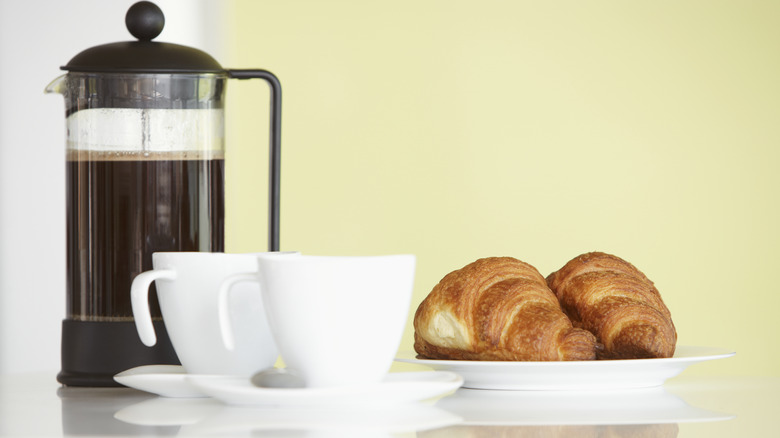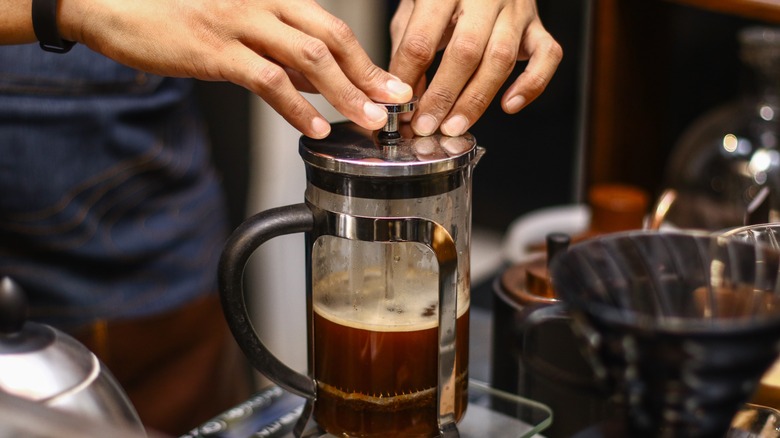The Prep Step You Shouldn't Skip For French Press Coffee
A perfect cup of coffee can be the holy grail of any morning and a pot of midday gold as the day rolls on. That's why brewing details matter in a serious way, relatively speaking. Fortunately, unlike life's more pressing priorities, there's always a do-over opportunity when it comes to liquid pleasure in your cup. It's never too late to learn a trick or two about java brewing, including how to make the best French press coffee.
Putting aside that fancy espresso machine you either own or dream of owning, makes way for a simplified coffee experience with earthy flavors in your cup. Back-to-basics believers can opt for pour-over and AeroPress methods, but the most widely used option is the plunger-style French press. Flavor extraction from your favorite light-, medium-, or dark-roasted coffee beans is surprisingly precise using this process. Though you won't be hand-grinding beans or steeping in earthen pots like Ethiopian coffee ancestors, the same "grind, heat, and steep" principles play out when brewing with a French press coffeemaker.
Given the straightforward flavor extraction of a French press, you may be surprised to hear of an important water-based prep step. It's one that can push your coffee from "very good" to "downright delicious." And it only takes a couple of minutes.
Press to perfection in pre-heated pot
Making coffee using a French press is highly water-centric, with carefully calculated H2O heat levels required for maximal flavor extraction. The French press method of making coffee relies on boiling-hot water that's been very slightly cooled for a minute or so, ideally to a temperature of 205 degrees Fahrenheit. But it's not just the temperature of the water as it enters the French press vessel that matters –- the vessel itself must also be hot. This takes a very easy step on your part: pre-heating the French press with a dose of equally hot water.
The reasoning behind this preparatory step is simple but crucial. When ground coffee beans steep slowly in very hot water, the liquid reaches full saturation, extracting the most desirable coffee compounds. But if the French press pot, typically made of glass or stainless steel, is at room temperature when the boiling water enters, it can lower the overall heat level of the water. This prevents it from pulling out the fullest, most robust flavors from the beans.
If you want consistent water temperatures while brewing, start by heating the pot. Simply fill the French press with boiling water, let it stand for up to two minutes, and pour it out. While the vessel is still warm, fill it with ground coffee beans, add a new round of boiling water, then seep and press to create an earthy, full-bodied pot of French press coffee.

